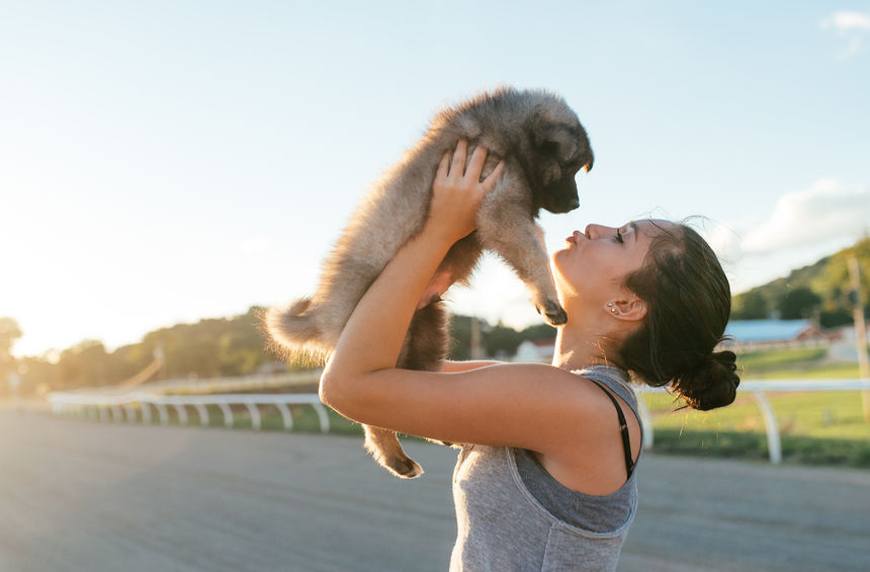See Spot Run—but Make Sure He Stays Healthy in the Heat With These Tips From a Dog Expert
But before you slather on your sport-ready sunscreen and leash up your pooch for a warm-up, you should consider whether it's actually healthy for her to be exercising in high temps. Seth Chodosh, founder of Running Paws—an NYC-based team of canine health pros who are basically personal trainers for dogs—shares when to lace up with your pup, for how long, and which breeds are born to run. Follow his rules of thumb (rules of paw?) to ensure your BFF's wellbeing remains a top priority from start to finish.
Here are 3 things you need to know before running with your dog in the summer.

1. Don't run with dogs in extreme heat or humidity
"Right off the bat, if it’s above 88° or it’s extremely humid, it’s just not a good idea to run at all," says Chodosh. When temperatures spike, slowing it down to a walk is the best thing for your good boy or girl, period.
You should also keep your outings shorter than normal, no matter what speed you're going, says Chodosh. "The pavement gets extremely hot and your dog’s pads can burn, so it’s just important to make sure you are aware of that," he says. Once the mercury hits 77°, the asphalt temperature becomes dangerous for dogs, so try to stick to grass or shady stretches of pavement.

{{post.sponsorText}}
Another no-go? Running with your puppy, ever. Yeah, I get it: They're just too cute to leave at home. But taking them for a jog when they're younger than eight months old can be harmful to their bones and joints, as they're still growing. Once you've had a year or so of bonding, says Chodosh, you'll be ready to up your pace.
2. Your dog's snout will tell you how long he can run
It might seem obvious, but English bulldogs and golden retrievers aren't biological equals when it comes to pounding the pavement. Breeds with shorter snouts tend to have shorter airways, meaning long runs just really aren't their thing."They’re not bred for it," explains Chodosh.
But even if your pet has a lengthy schnoz, the expert says you should cap the jog at a mile and a half. "People often say, 'I can jog with my dog ten miles.' Sure, you can, but the reason why I won’t jog long distances with dogs is because they can’t tell you if they’re injured," he explains, adding that breeds like labradors aim to please their owners at all costs, and will keep running even if they're hurt or feeling sick.
So no matter what breed you've got, plan your route so that you can circle back home after three-quarters of a mile. Then, continue on solo if you want.
3. Monitor your pup while you're on the road
Just like a loss of good form or an unbearable side stitch indicates that you might need to slow down and take a water break, dogs show indicators of their fatigue, too. While en route, Chodosh says you should be on alert for two things: lagging behind and heavy panting.
Not sure whether your pup's behavior is normal or not? Chodosh says to be patient—the more time you spend on the trails or roads together, the more you two will sync up. "The most important part is knowing your dog. If you jog with your dog ten different times, you know when they’re struggling or not struggling," Chodosh says. So when it comes to summer run club with your fluffy friend, the instructions are pretty simple: Know thy dog as you would know thyself. (And schedule indoor workouts accordingly.)
Now that you have your dog's exercise regimen covered, here's how often to clean her food bowl and brush her teeth.
Loading More Posts...